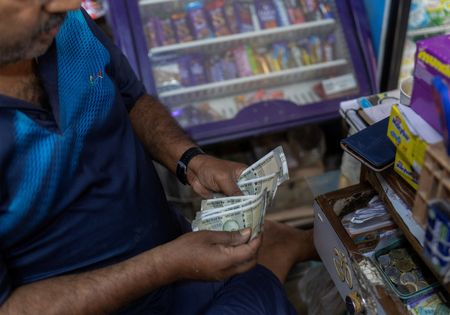By Jaspreet Kalra
MUMBAI (Reuters) -The Indian rupee shuffled in a tight range on Thursday as a boost from improved risk appetite globally ran into importers’ dollar demand, while dollar-rupee far forward premiums slid as U.S. Treasury yields rose.
The rupee was last at 88.6050 against the U.S. dollar, up modestly from its close of 88.6550 on Tuesday. India’s financial markets were shut on Wednesday for a local holiday.
An easing of the selloff in global tech stocks helped boost risk appetite globally, helping Asian currencies and equities nudge higher.
The MSCI’s gauge of Asian equities outside of Japan was up nearly 1% and India’s equity benchmarks, the Nifty 50 and BSE Sensex were little changed on the day.
While the rupee kicked off the session on a stronger note too, importer activity eroded some of its gains, according to traders.
On the flipside, frequent interventions by the Reserve Bank of India to prevent the rupee from falling past its all-time low at 88.80 have spurred expectations that the central bank is unlikely to relent in its defence of the key level in the near-term.
State-run banks were also spotted offering dollars near 88.65 on Wednesday, a trader at a large private bank said.
“The RBI has successfully defended the 88.80 level twice, establishing it as a strong resistance zone for USD/INR, while support now sits at 88.50–88.60,” said Amit Pabari, managing director at FX advisory firm CR Forex.
Meanwhile, the dollar index was perched at the 100-handle and U.S. Treasury yields rose after data showed that U.S. services sector activity increased to an eight-month high in October, lowering chances of a Federal Reserve rate cut in December.
Money markets trimmed wagers on the Fed’s December rate cut, leading to dollar-rupee forward premiums retreating. This pegged the 1-year dollar-rupee implied yield back to 2.13%, the lowest level since late-August.
(Reporting by Jaspreet Kalra; Editing by Janane Venkatraman)










